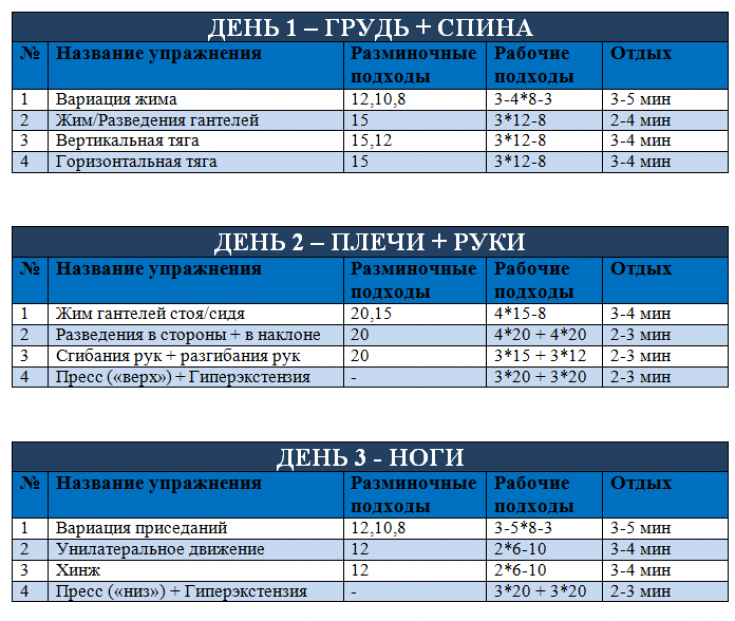As experience shows, it is not always important where to train — in a fancy gym or at home, in a modest odnushka. Much more important is how to train, since building biceps & Co, like any other process, requires a serious, and even better, scientific approach, careful development, and a well-thought-out system. Our portal will talk about the research of scientists in this area and tell you how to achieve muscle growth at home as efficiently, quickly and without harm to health. Read the material also about the opinion of scientists about muscle growth.
Why and how muscle growth occurs
First you need to clearly define what you want: to increase strength or muscle size? Since these are different goals, the training needed to achieve them is different. So, the popular pumps with weights give the muscles a load, which causes physiological processes that contribute to their increase. Moreover, paradoxical as it may sound, the processes of increase (due to the thickness of muscle fibers and the amount of fluid in muscle cells) are triggered during rest from exercise.
Another nuance is important: even with the same amount of training, different people can experience different growth in muscle mass. This may depend on the following factors:
- gender;
- age;
- genetic inclinations;
- sleep (lack of sleep hurts everything);
- nutrition, quantity of clean water consumed;
- healthy lifestyle;
- stress.
Even if you train with the best instructor on the latest simulators, you will not become a Schwarzenegger if you ignore proper nutrition, healthy sleep.
What scientists say about muscle growth
As a result of physical exercises, specific stress arises in the body: mechanical and metabolic. The result of both types of stress — growth of muscle fibers. But they grow actively only if the body in physical effort has reached the “I can’t” threshold; — in professional vocabulary, this is called "muscle failure." The human body is arranged very intelligently, therefore it is able to store and use energy as efficiently as possible. In the case of "pulling iron" this ability of the body looks like this: if the loads are not increased, keeping them at a constant level, this will result in limiting the magnitude of mechanical and metabolic stresses and the pumping result will be, to put it mildly, far from expected. That is, you will increase muscle strength, but you will not achieve the necessary increase in muscle mass. Hence the conclusion: you want to have biceps-triceps of impressive volumes — practice until, roughly speaking, you fall off your feet.
Scientists have been able to prove that you can effectively build muscle mass only by hard training until muscle failure, that is, until a person realizes that he is unable to do another set.
In the language of scientists, there are 3 types of training (they were announced in 2006 by scientists Kremer and Zatsiorsky):
- maximum effort method;
- dynamic force method;
- repeated effort method;
The first method (heavy weight training) is good for developing muscle strength. The second (classes with the fastest possible weight movement) will be appreciated by fans of "high-speed" sports. But the third — method of repeated efforts — for those who want to achieve maximum muscle growth. Pundits in this matter are unshakable: you want to have a relief body — train to muscle failure, because with insufficient load, the conditions necessary for muscle growth will not be created in the body.

Sleep and Recovery — important conditions for muscle growth
As already mentioned, the physiological processes that lead to muscle growth occur mainly during rest. Therefore, it is impossible to overestimate the role of sleep in this matter. Those same metabolic and mechanical stresses that give impetus to muscle growth will not be in vain only when the body releases the hormones and substances necessary for the growth of biceps & Co. They stand out just during sleep, to be extremely accurate — in REM sleep. Lack of sleep, sleep in adverse conditions, training to exhaustion will nullify. Moreover, increased levels of cortisone and adrenaline due to lack of sleep will reduce the body's ability to build muscle mass.
Scientists have calculated that the body needs 48 to 72 hours to recover, which is necessary for muscle growth. This is how much time should pass between workouts of individual muscle groups.
Recovery period after training — this is the time when glycogen stores are replenished in the muscles, the processes of reconstruction and the construction of new muscle tissues are activated. Scientists have calculated that the body needs from 48 to 72 hours to recover, which is necessary for muscle growth. That is how much time should pass between training individual muscle groups. Therefore, it is logical to give the main load to each muscle group, for example, once a week.
Science-based training program for effective muscle growth
Scientists calculated all — from training beginners to weight "iron" and rest time needed for the most effective muscle building workouts at home:
- prep: to avoid muscle damage, beginners should start with a dynamic warm-up, core muscle loading (stabilizer muscles, abs…);
- weight should be selected so that you can do 8-12 repetitions to muscle failure;
- number of sets: 3-4;
- rest between sets: 30 sec to 2 min;
- movement speed: 1-2 sec — movement (for example, lifting a barbell), 2-6 sec — eccentric phase of the exercise (lowering the bar). Scientists insist on a longer second part of the movement, since it is extremely important for muscle growth;
- weights: free weights or machines. Free weight training involves a large number of muscles, which contributes to an increase in muscle mass density. Exercise machines give a greater load on individual muscles;
- exercise order: start — complex movements with free weights (for example, squats with a barbell) to engage different muscle groups. Then — training of individual muscles (for example, on simulators);
- the final exercise in each workout should be done with reduced weight, but it is necessary (!!!) until muscle failure;
And one more important nuance: remember about the optimal load on the body. Both underload and overload have a negative effect on muscle growth. Therefore, it is important to choose the golden mean.
Research-Backed Home Muscle Growth Workout Program
Based on research on the effectiveness of muscle growth, scientists have created a program designed for repetitive four-day cycles. It looks like this:
- 1 day — lower body workout (RM — rep max);
- Day 2 — upper body workout, deadlift;
- Day 3 — upper body workout, presses;
- Day 4 — rest or gentle cardio exercise.

If all exercises are performed correctly, and each movement — carefully, at the right speed, then the effect of home workouts will be no worse, and possibly even better, than working out in the gym with a professional instructor.
See more important and useful information on YouTube:






Add a comment